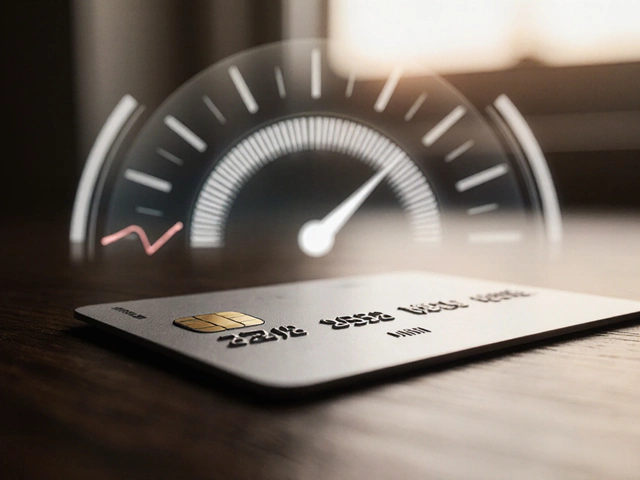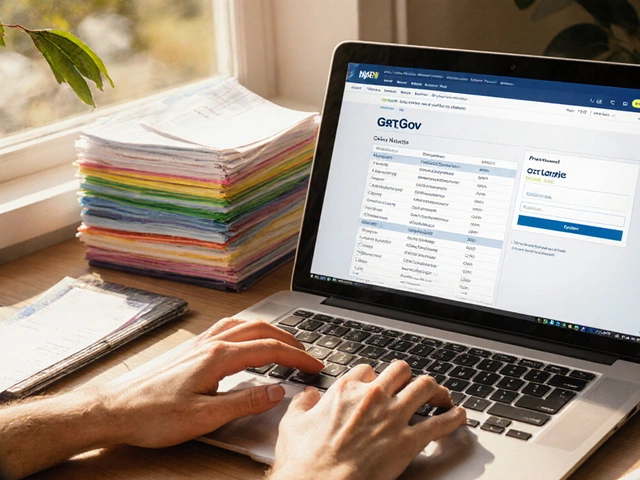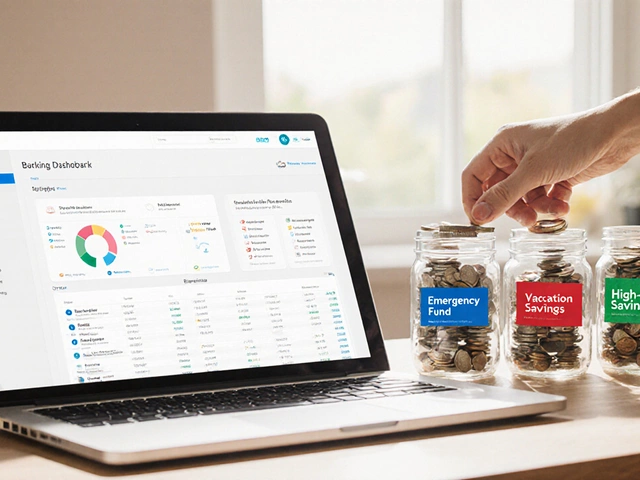
You’re not hunting for a pretty mobile app-you want a bank account in India that won’t sting you with fees, is safe, pays a fair rate, and lets you move money without drama. Here’s the short, honest answer: there isn’t one bank that’s “best” for everyone. There’s a best bank for your exact use case-salary, student, NRI, high-interest, or cash-heavy business. I’ll help you pick that fit in a few minutes.
- For zero-fuss branch reach and reliability, SBI is hard to beat.
- For slick apps and fast service, HDFC and ICICI lead the private pack.
- For higher interest, look at IDFC FIRST or AU Small Finance Bank-but watch balance rules and ATM limits.
- For zero-balance digital accounts, Kotak 811 and DBS Bank India (digibank) are strong picks.
- For NRE/NRO and international remittances, SBI, HDFC, and ICICI have the widest rails and support.
How to choose the right bank account in 2025 (and avoid fee traps)
Before brand names, nail the decision criteria. A few rules here can save you thousands of rupees a year.
- Safety first: You’re protected by DICGC up to ₹5 lakh per depositor, per bank. That’s law. If you park more, spread money across banks. RBI regulates all scheduled commercial banks and small finance banks; payments banks have restrictions (no credit, and some faced curbs in 2024).
- Fees and minimum balance: Scan the “Schedule of Charges” on the bank’s website. Focus on average monthly balance (AMB) requirements, non-maintenance penalties, ATM withdrawal limits (most give 3-5 free at other-bank ATMs, then ~₹21 per transaction), cash deposit limits, and IMPS/NEFT/UPI charges (UPI P2P remains free for individuals).
- Interest rate vs access: Small finance banks often advertise higher savings rates. Good for a surplus, but check branch/ATM footprint and digital reliability. Consider sweep-in FDs to lift yield without locking cash.
- Digital experience: You’ll use the app more than branches. Look for fast onboarding (video KYC), card controls, UPI stability, instant VPA creation, robust notifications, and quick dispute resolution.
- Network and convenience: If you handle cash or travel domestically, branch density and ATM reach matter. PSU banks like SBI win here.
- NRI and remittance rails: If you live abroad or send money often, choose banks with strong NRE/NRO/FCNR offerings, decent forex markups, and overseas partners.
Quick rule of thumb:
- Salary in a metro and you live digital-first? Pick a large private bank (HDFC/ICICI), then add a high-interest secondary account.
- Cashing cheques and visiting branches? SBI or a large PSU bank.
- Maximising yield on idle cash? Pair your main bank with IDFC FIRST/AU SFB + sweep-in FDs.
- Studying or starting out? Zero-balance digital (Kotak 811/DBS) or a salary account that waives AMB.
- NRI? SBI/HDFC/ICICI for NRE/NRO + remittance tie-ups.
Red flags that cost you money:
- Hidden SMS/alerts charges (common), cash deposit fees beyond small free limits, and platter of “value-added” bundles you never asked for.
- Zero-balance accounts that quietly convert to AMB after a promo period.
- Payment banks positioned as “full banks” (they’re not; they can’t lend, and some faced RBI restrictions).
Evidence you can trust: DICGC insurance is set at ₹5 lakh (raised in 2020); RBI permits digital/video KYC under its KYC Directions; and ATM fee caps and UPI policies are notified by RBI/NPCI. Always verify the latest schedule of charges and interest rate grids on the bank’s website-these change often.
Personal note for context: I live in Sydney and split funds between a large private bank for day-to-day and a higher-yield account for surplus. When I’m wiring money to family, I favour banks with stable NRE rails and predictable FX spreads. Larissa jokes I treat bank fee PDFs like bedtime reading-she’s not wrong.

Top Indian banks compared: fees, rates, network, and who they suit
You asked for specifics. Here’s the picture as of 2025 based on typical published grids and real usage. Rates and fees vary by city (Metro/Urban/Semi-Urban/Rural) and change often-treat this as a decision map, then confirm numbers on the bank’s official pages.
- SBI (State Bank of India): Best if you need branches everywhere, predictable service, and lower fees on cash. Great for families and seniors. Digital app has improved, but not the flashiest.
- HDFC Bank: Polished app and service, wide product suite, huge ATM network. Watch AMB/failure penalties. Often generous on salary account features.
- ICICI Bank: Excellent digital stack, fast onboarding, wide remittance partners. Similar fee vigilance needed as HDFC.
- Axis Bank: Good digital, competitive offers, strong credit cards. Balance/fee vigilance applies.
- Kotak Mahindra Bank (Kotak 811): Zero-balance digital accounts, easy app, good for students and first-timers. Mind the variants; some features unlock after full KYC.
- IDFC FIRST Bank: Higher savings rates on certain slabs, many zero-fee transactions on some plans. Smaller footprint than the top 3, but app is strong.
- AU Small Finance Bank: Consistently aggressive on savings rates; improving app; expanding branches. Great as a yield booster; just keep insurance limits in mind.
- DBS Bank India (digibank): Digital-first, zero-balance variants, clean app. Branch reach smaller; ideal for urban, app-led users.
- IndusInd Bank: Feature-rich accounts and remittance support, frequent promos. Check the fine print on charges.
| Bank | Typical strengths | Indicative savings interest | Min balance (metro) | ATM free txns/mo | NRE/NRO | Digital KYC | Notes on fees |
|---|---|---|---|---|---|---|---|
| SBI | Largest branch/ATM network; reliable PSU | ~2.70%-3.00% (tiered) | ₹0 (BSBD) or ₹3,000-5,000 on regular | 3-5 at other-bank ATMs typical | Yes (NRE/NRO/FCNR) | Yes (video KYC variants) | Cash deposit free limits decent; low SMS charges |
| HDFC Bank | Top-tier app; service and products | ~3.00%-3.50% (slab-based) | ₹10,000+ on many variants; salary = 0 | 3-5 free typical; then capped fee | Yes (NRE/NRO/FCNR) | Yes | Watch AMB penalties, cash handling fees, and SMS packs |
| ICICI Bank | Strong digital; wide remittance tie-ups | ~3.00%-3.50% | ₹10,000+; salary = 0 | 3-5 free typical | Yes (NRE/NRO/FCNR) | Yes | Check cash deposit/free limits; cross-bank ATM charges post-limit |
| Axis Bank | Competitive offers; good app | ~3.00%-3.50% | ₹10,000-15,000; salary = 0 | 3-5 free typical | Yes | Yes | Add-on bundle fees-opt out if you don’t need |
| Kotak 811 | Zero-balance digital onboarding | ~3.00%-3.50% (varies) | ₹0 (select 811 variants) | 3-5 free typical | Yes (via Kotak) | Yes | Feature tiers after full KYC; read conversion terms |
| IDFC FIRST Bank | Higher savings slabs; many zero-fee txns | ~4.00%-7.00% (slab) | ₹0-10,000 (by variant) | Often higher free limits | Yes | Yes | Rates can change; confirm AMB and free-transaction caps |
| AU Small Finance Bank | High interest; expanding footprint | ~5.00%-7.50% (slab) | ₹0-10,000 (by plan) | 3-5 free typical | Yes | Yes | Use for yield; keep DICGC ₹5 lakh per bank in mind |
| DBS Bank India | Digital-first; clean zero-balance options | ~3.00%-4.00% | ₹0 (select digibank) | 3-5 free typical | Yes | Yes | Smaller branch network; great for app-led users |
| IndusInd Bank | Feature-rich; promos | ~3.00%-4.00% | ₹10,000+ (varies) | 3-5 free typical | Yes | Yes | Watch bundled plans; check SMS/alerts and cash limits |
Numbers are indicative and change frequently. Always check the bank’s official “Schedule of Charges” and “Interest Rate” pages before opening.
Best-for picks (so you don’t overthink):
- Best branch reach: SBI
- Best private-bank all-rounder: HDFC or ICICI
- Best zero-balance starter: Kotak 811 or DBS Bank India
- Best high-interest companion account: IDFC FIRST or AU Small Finance Bank
- Best for NRIs: SBI, HDFC, or ICICI (NRE/NRO/FCNR depth and global partners)
- Best for cash-heavy users: SBI or large PSU branches near you
Not-for caveats:
- Relying only on a small finance bank for very large balances-spread across banks to stay within DICGC per-bank cover.
- Opening a payments bank account for full-service needs-they can’t offer credit and some faced RBI restrictions; not a primary bank substitute.

Which bank is “best” for you? Scenarios, steps, FAQs, and next moves
If you came for the one-word answer to “Which Indian bank is best to open an account?”, here’s the closest honest version: the best Indian bank for savings account depends on your top priority-fees, convenience, interest, or NRI features. Use the quick picks below.
Scenario picks:
- Student/first job: Kotak 811 or DBS Bank India for zero-balance + HDFC/ICICI salary account if your employer supports it. Keeps fees at zero and UPI smooth.
- Salaried in a metro: HDFC or ICICI as the primary (salary variant to waive AMB) + IDFC FIRST/AU SFB for surplus interest with auto-sweep.
- Self-employed with cash deposits: SBI or a PSU bank near your market area; they’re more forgiving on cash handling and branch workflows.
- Seniors/retirees: SBI or large private bank with senior accounts that include higher FD rates, doorstep banking, and healthcare tie-ins. Prioritise low fees and branch availability.
- NRI (living abroad): SBI, HDFC, or ICICI for NRE/NRO/FCNR and stable remittances. If you’re in Australia like me, check the bank’s money-transfer partners and AUD-INR spreads.
- Frequent domestic traveler: HDFC/ICICI for large ATM networks, better dispute handling, and virtual debit controls in-app.
Decision tree (keep it simple):
- If you hate fees → Salary account with HDFC/ICICI/Axis (AMB waived) or Kotak 811/DBS (zero-balance).
- If you want branches everywhere → SBI.
- If you want higher savings rates → IDFC FIRST or AU SFB (and use sweep-in FDs for extra yield).
- If you’re NRI → SBI/HDFC/ICICI for NRE/NRO/FCNR + remittance rails.
- If you want a one-and-done bank → HDFC or ICICI.
How to open an account (step-by-step):
- Pick your account type: Regular Savings, Salary, BSBD (basic/zero-balance), or NRE/NRO/FCNR (for NRIs).
- Get documents ready: PAN, Aadhaar (or Form 60 if no PAN), one address proof, passport-size photo. For NRIs: passport, valid visa, overseas address proof, OCI/PIO if applicable, and FATCA/CRS declarations.
- Apply online: Most banks support instant application + video KYC. You’ll need good lighting, original documents, and a steady internet connection.
- Fund the account: Some banks require a small initial deposit. Set up UPI immediately and enable debit card controls in-app (set limits, enable/disable channels).
- Automate safety: Add beneficiary for your main payees, turn on transaction alerts, and enable 2FA on your netbanking. Create a sweep-in FD if available for balances above your average need.
Fees and yield hacks:
- Salary accounts waive AMB-keep salary credit regular or they may reclassify you to a fee-bearing variant.
- Use your bank’s UPI and own-bank ATM first to avoid cross-bank ATM fees. Withdraw fewer, larger amounts when needed.
- Set “sweep-in” threshold just above your monthly spend. That auto-parks surplus into higher-yield FDs and pulls back on demand.
- If you must deposit cash often, pick a branch near you with generous free limits (PSU banks are usually kinder here).
Interest rates-what’s realistic in 2025?
- Large PSU/private banks: ~2.5%-3.5% on standard savings balances, with tiered slabs.
- Small finance banks: often ~5%-7.5% on higher slabs. Promotional rates can shift-always check the current slab grid.
- Smart move: split balances-keep 1-2 months of expenses in your main account, move the rest to a higher-rate companion (or short FDs).
Safety and regulation notes you can rely on:
- DICGC insures deposits up to ₹5 lakh per depositor, per bank. If you hold more, diversify across banks/ownership types.
- RBI allows digital/video KYC; full features unlock after full KYC. Watch for accounts that start as “limited KYC” with lower limits.
- UPI person-to-person is free; merchant UPI rules evolve but don’t affect your basic banking costs the way AMB and ATM fees do.
Common pitfalls (so you don’t learn the hard way):
- Thinking “zero-balance” means zero everything-some charge for ATM, cash, statements, or SMS.
- Assuming a great app equals low fees-HDFC/ICICI have strong apps and strong penalty grids if you miss AMB on non-salary variants.
- Parking very large sums in one bank-stay within insurance, and review quarterly.
Mini-FAQ
Which bank is the absolute best to open a savings account? If forced to pick one all-rounder: HDFC or ICICI for metro users who want a polished app, quick support, and wide features. If you prioritise branch reach and lower cash hassles: SBI. For high interest: IDFC FIRST or AU SFB, as a secondary.
Is a zero-balance account really free? Often for AMB, yes. But you can still pay for ATM after free limits, cash deposits, duplicate statements, or SMS packs. Read the Schedule of Charges.
Can NRIs open accounts online? Many banks offer online initiation and video KYC for NRO; NRE may need extra steps or in-person verification depending on your location. Check the bank’s NRI desk instructions.
How much of my money is safe if a bank fails? DICGC insures up to ₹5 lakh per depositor, per bank. To cover more, spread across multiple banks or ownership categories.
What about payments banks? They’re fine for UPI/wallet-style use, but not a full substitute-no lending, limited products, and some faced RBI restrictions in 2024. Keep a full-service bank as primary.
Will I earn more with savings or FDs? Usually FDs pay more. Use sweep-in FDs to keep liquidity while lifting yield. Match FD tenors to when you’ll actually need the cash.
Next steps (do this now):
- Pick your primary based on convenience: SBI if you need branches; HDFC/ICICI if you live on your phone.
- Add a high-interest companion: IDFC FIRST or AU SFB for surplus funds with sweep-in.
- Open online with video KYC, turn on card/UPI controls, and set alerts. Put a calendar reminder to re-check fees/rates every 6 months.
Troubleshooting quick fixes:
- Hit with AMB penalties? Convert to a zero-balance variant if eligible, or switch to a salary account. Ask support to waive the first penalty-often works if you’re a new customer.
- UPI failing repeatedly? Link through your bank’s app once, then use your favorite UPI app; ensure your mobile number is the registered one.
- Need lots of cash deposits? Use your home branch; PSU banks often have higher free limits there. Consider digital alternatives for small payments.
- Remittance delays (NRI)? Initiate during Indian banking hours, avoid weekends, and set beneficiary ahead of time; use SWIFT details exactly as the bank states.
Final thought: Don’t marry a bank-use it. Keep one account for seamless daily use and a second for yield. Re-check fees twice a year. That simple system beats chasing shiny promos and keeps your money working while you sleep.








Write a comment